Abstract
Orientation-selective cells--cells that are selectively responsive to bars and edges at particular orientations--are a salient feature of the architecture of mammalian visual cortex. In the previous paper of this series, I showed that such cells emerge spontaneously during the development of a simple multilayered network having local but initially random feedforward connections that mature, one layer at a time, according to a simple development rule (of Hebb type). In this paper, I show that, in the presence of lateral connections between developing orientation cells, these cells self-organize into banded patterns of cells of similar orientation. These patterns are similar to the "orientation columns" found in mammalian visual cortex. No orientation preference is specified to the system at any stage, none of the basic developmental rules is specific to visual processing, and the results emerge even in the absence of visual input to the system (as has been observed in macaque monkey).
Full text
PDF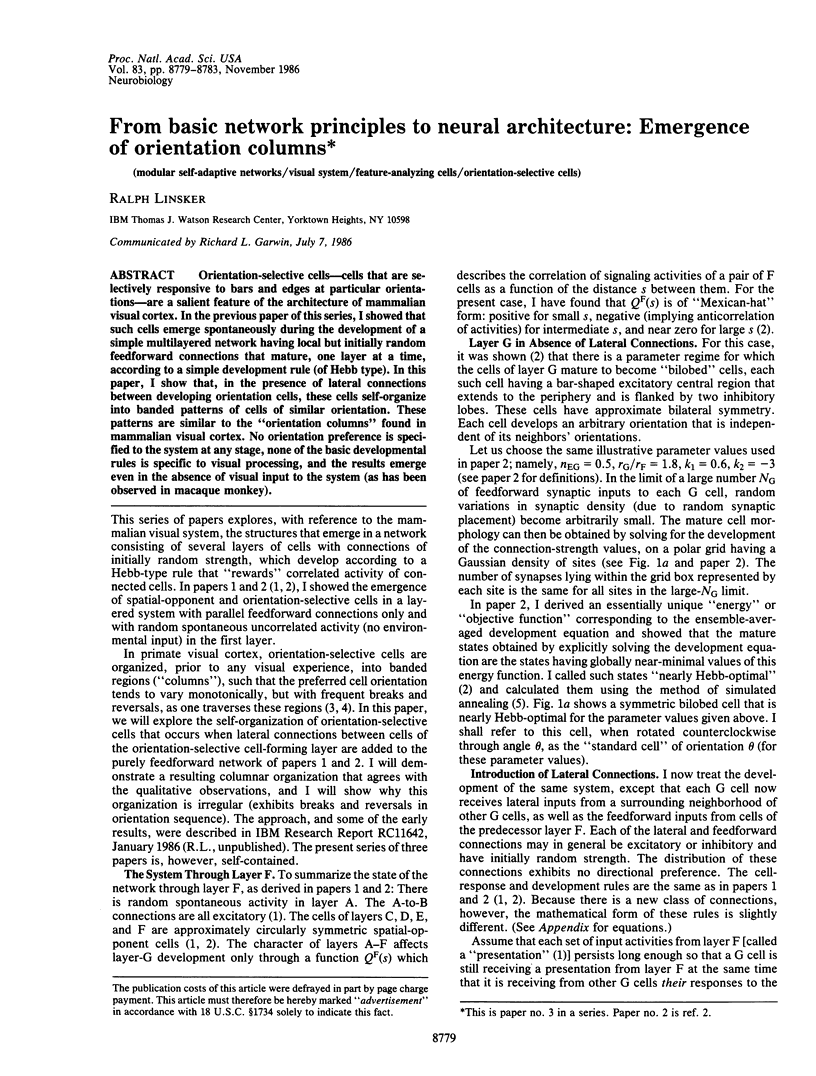
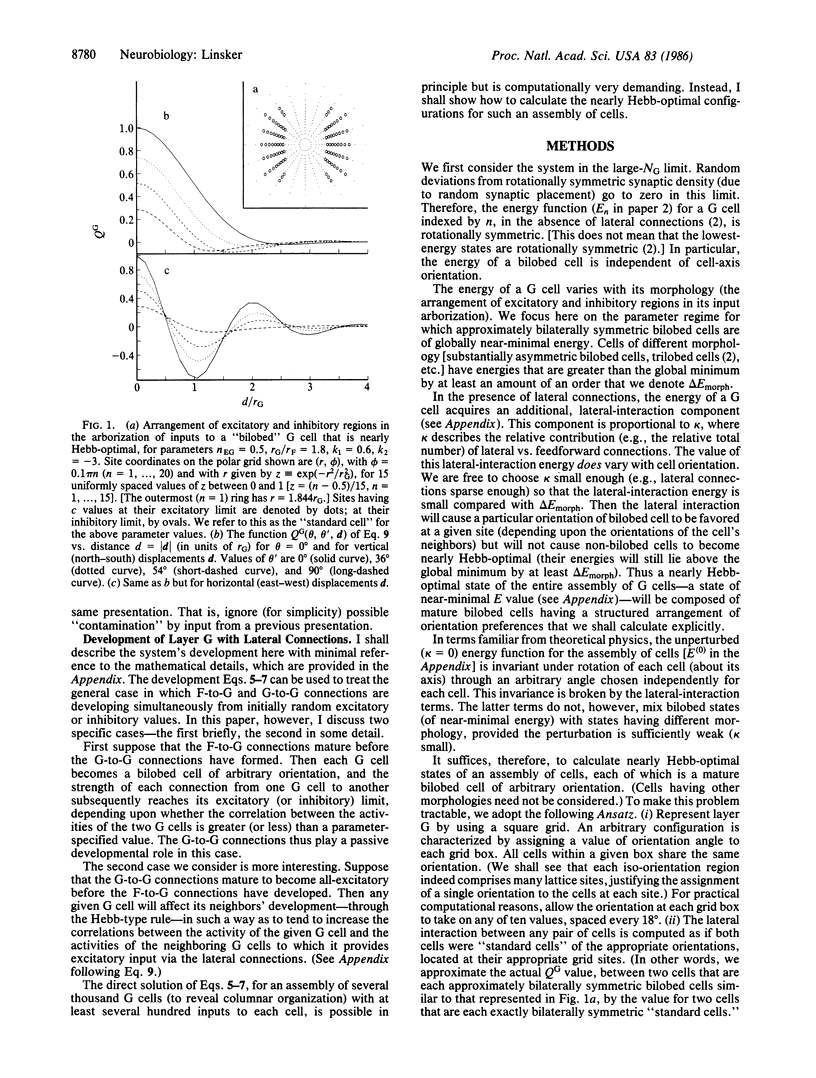
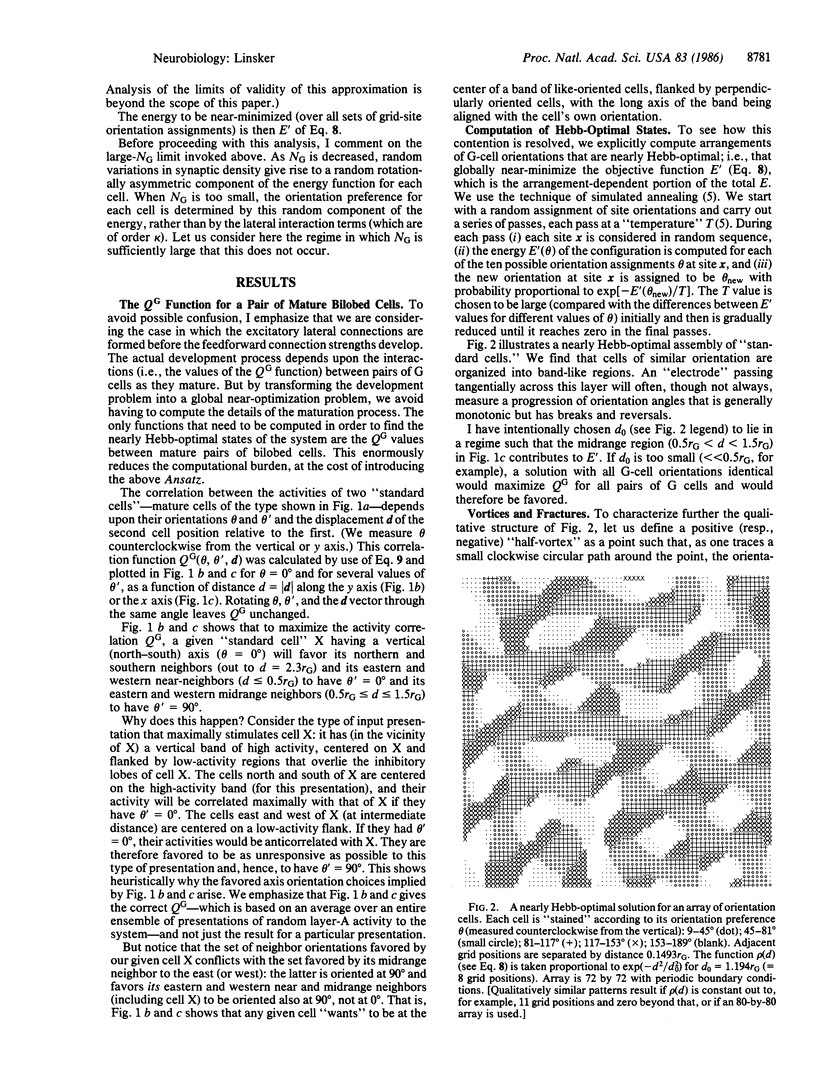
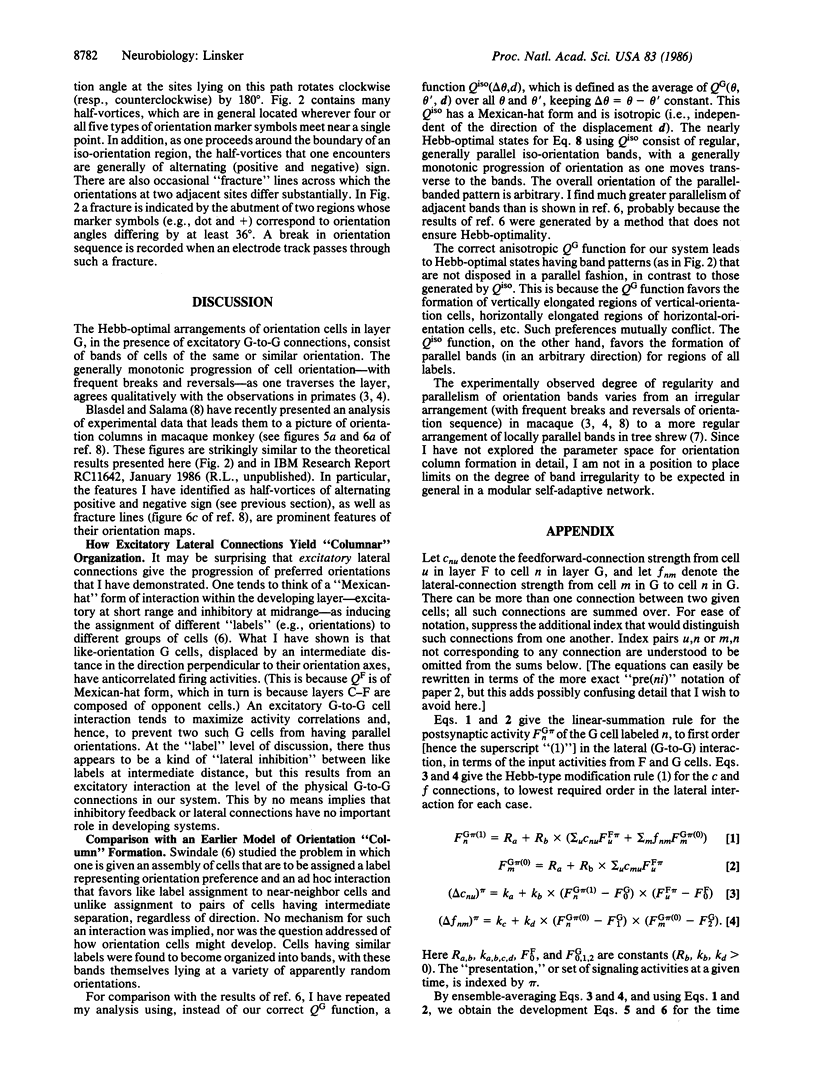
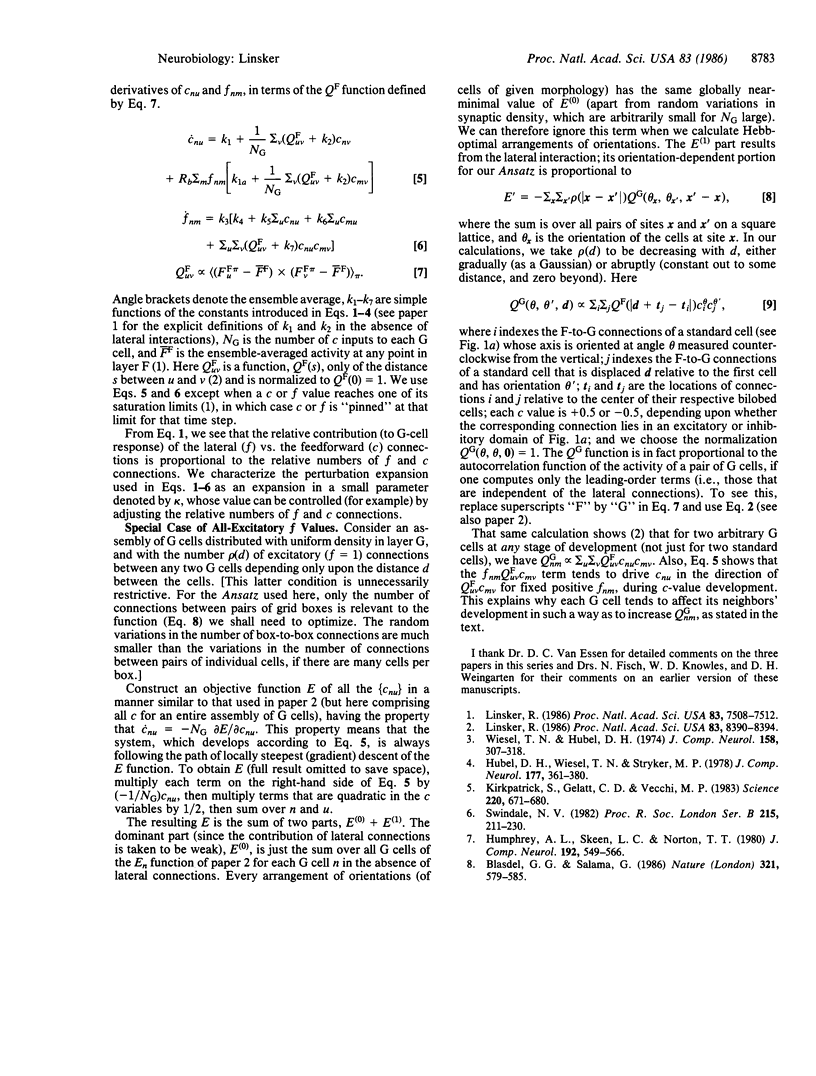
Selected References
These references are in PubMed. This may not be the complete list of references from this article.
- Blasdel G. G., Salama G. Voltage-sensitive dyes reveal a modular organization in monkey striate cortex. Nature. 1986 Jun 5;321(6070):579–585. doi: 10.1038/321579a0. [DOI] [PubMed] [Google Scholar]
- Hubel D. H., Wiesel T. N., Stryker M. P. Anatomical demonstration of orientation columns in macaque monkey. J Comp Neurol. 1978 Feb 1;177(3):361–380. doi: 10.1002/cne.901770302. [DOI] [PubMed] [Google Scholar]
- Humphrey A. L., Skeen L. C., Norton T. T. Topographic organization of the orientation column system in the striate cortex of the tree shrew (Tupaia glis). II. Deoxyglucose mapping. J Comp Neurol. 1980 Aug 1;192(3):549–566. doi: 10.1002/cne.901920312. [DOI] [PubMed] [Google Scholar]
- Kirkpatrick S., Gelatt C. D., Jr, Vecchi M. P. Optimization by simulated annealing. Science. 1983 May 13;220(4598):671–680. doi: 10.1126/science.220.4598.671. [DOI] [PubMed] [Google Scholar]
- Linsker R. From basic network principles to neural architecture: emergence of orientation-selective cells. Proc Natl Acad Sci U S A. 1986 Nov;83(21):8390–8394. doi: 10.1073/pnas.83.21.8390. [DOI] [PMC free article] [PubMed] [Google Scholar]
- Linsker R. From basic network principles to neural architecture: emergence of spatial-opponent cells. Proc Natl Acad Sci U S A. 1986 Oct;83(19):7508–7512. doi: 10.1073/pnas.83.19.7508. [DOI] [PMC free article] [PubMed] [Google Scholar]
- Swindale N. V. A model for the formation of orientation columns. Proc R Soc Lond B Biol Sci. 1982 May 22;215(1199):211–230. doi: 10.1098/rspb.1982.0038. [DOI] [PubMed] [Google Scholar]
- Wiesel T. N., Hubel D. H. Ordered arrangement of orientation columns in monkeys lacking visual experience. J Comp Neurol. 1974 Dec 1;158(3):307–318. doi: 10.1002/cne.901580306. [DOI] [PubMed] [Google Scholar]


